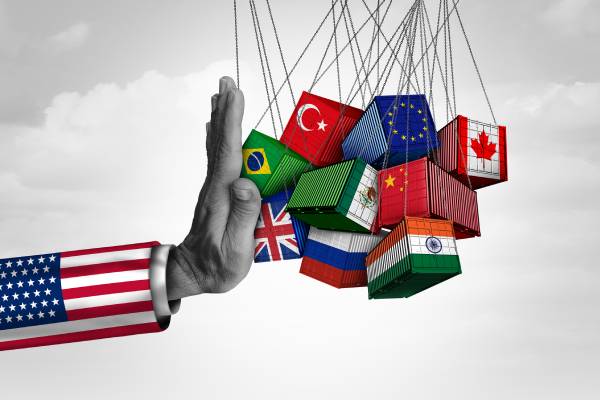
The U.S. trade landscape just changed dramatically. In a webinar held Thursday, Flexport CEO Ryan Petersen and VP of Customs Bernie Hart broke down what the new executive orders from the Trump administration really mean — including the end of the de minimis exemption, sweeping new tariffs under a “reciprocal” framework, and a warning to businesses: brace for disruption.
Here are five key takeaways from the discussion:
1. The End of De Minimis Shipping Will Upend E-Commerce
Starting May 2, all Chinese de minimis shipments under $800 will no longer be duty-free. A full global shutdown is expected soon after. “This is a big hitter across the industry,” Hart said. “We went from 100,000 entries a day to 4.1 million. Now all of that will require formal customs clearance.” Even smaller retailers using fulfillment hubs in Mexico or Canada will be impacted, as all duty-free shipments will soon require customs entry, additional data, and processing fees.
2. Reciprocal Tariffs Are Here — and They Stack
The new tariff regime includes a 10% baseline tariff on all countries, with higher rates for nations running large trade surpluses with the U.S. China faces an additional 34%, Vietnam 46%, and other countries as high as 50%. These stack on top of Section 301, Section 232, and any preexisting duties. “This is a nuclear bomb for some of these businesses,” Petersen said. “You’re now at a 79% duty rate on something that used to be free.”
3. Exemptions Exist — If You Know Where to Look
Some categories — like semiconductors, pharmaceuticals, chemicals, and critical minerals — are excluded via Annex II. However, the exemptions depend on the exact HTS code and whether certain tariffs stack or replace existing ones. “Everything comes back to the HTS number,” Hart said. “There’s nuance in whether these tariffs stack or not — and those details matter.”
4. Supply Chain Visibility Is Now Mandatory
Companies will need precise data about where their goods were made, how they were assembled, and what’s in them, down to individual components and costed bills of material. “There’s no more room for vague sourcing,” said Hart. “You need ‘dirt-to-shirt’ traceability — not just for compliance, but for survival.” He urged importers to use product libraries, track SKUs by origin, and prepare to defend every customs entry with documentation.
5. This Is Just the Beginning
Many of the tariffs go into effect between April 5 and April 9. However, more changes are likely, including possible retaliation, updates to other free trade agreements, and even a 25% duty on countries that import Venezuelan oil. “One cabinet member told me April 2 was the start, not the end,” Petersen said. “This is a negotiation tactic — and it’s far from over.”
Bottom Line
For importers, this isn’t a policy shift — it’s a system shock. Businesses will need to rework sourcing strategies, increase compliance capabilities, and rethink how and where they fulfill orders. “This is not the moment to panic,” Petersen said. “But it is the moment to get serious.”